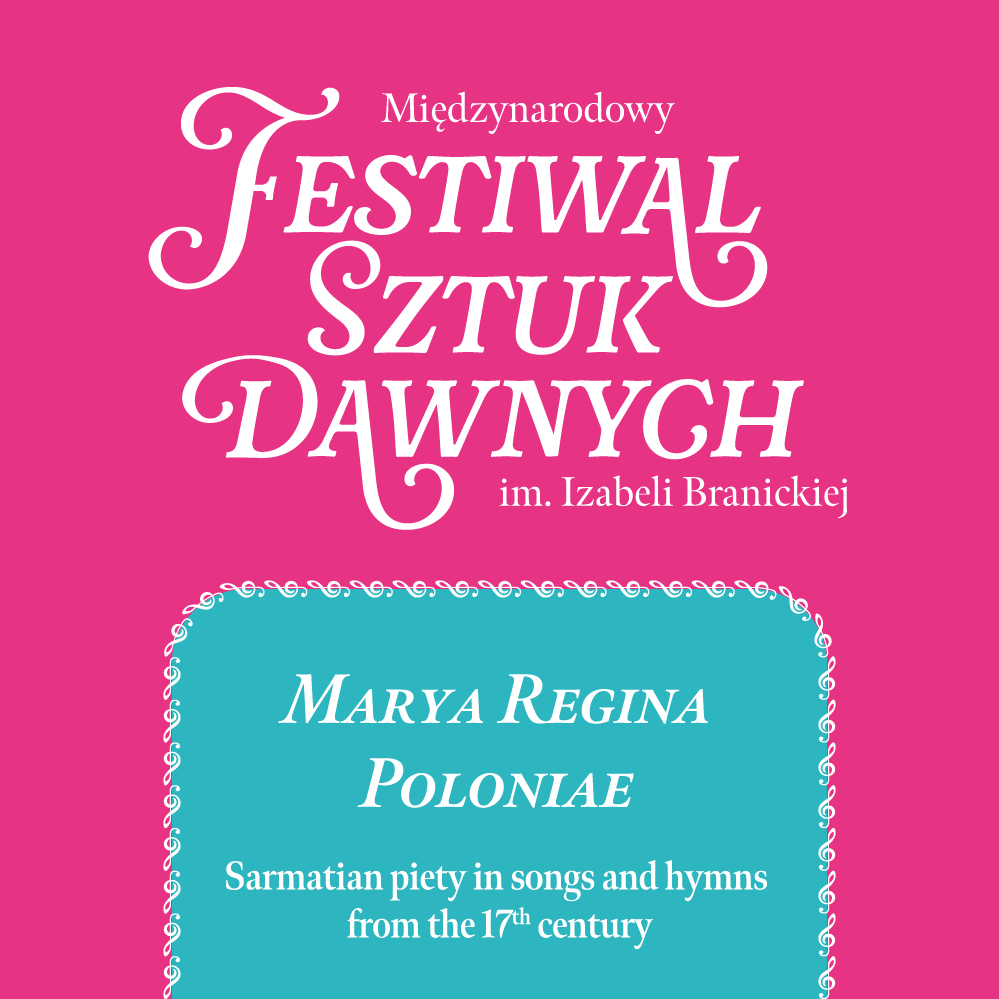Watch on-line:
Performers:
- Jerycho Ensemble
Bartosz Izbicki — kierownictwo artystyczne
Alicja Sulkowska, Małgorzata Izbicka
Paweł Szczyciński
Mateusz Grzyb, Wawrzyniec Dąbrowski
Stanisław Szczyciński, Łukasz Kalisz - Kapela Jazdowska, dir. Justyna Rekść-Raubo
Justyna Rekść-Raubo - viola da gamba
Paulina Garlińska - viola da gamba
Henryk Kasperczak - chitarrone - Bartosz Izbicki - positive, chalumeau, artistic direction
Event description:
The seventeenth-century Sarmatism was marked by a belief in God’s special involvement in the fate of the Polish-Lithuanian Commonwealth, with devotion to Mary being the most distinctive aspect of Sarmatian piety. In the spring of 1656, during the Swedish Deluge, almost the entire Commonwealth was under enemy occupation. The king remained in the south of the country, while Jasna Góra continued its defense. On April 1st, in the Lviv Cathedral, King John II Casimir of the House of Vasa solemnly declared: Great Mother of God Incarnate, O Most Pure Virgin! I, John Casimir, by the grace of Your Son, the King of Kings and my Lord, and by Your grace, as King, kneeling at Your most holy feet, do today choose You as the Patroness of my kingdom and its Queen...
Thus, Mary was proclaimed the Queen of Poland. This was not a new idea, as for centuries, the relationship with Mary had become a defining element of Polish piety, setting it apart with an exceptional quality not found in other nations. Mary was the closest saint to the Polish people. For the Sarmatian, the Mother of God was also his mother, relative, Lady, and, above all, Queen. The Commonwealth, under Mary’s special protection, was seen as the bulwark of the Christian world, and Poles viewed themselves as a new chosen nation, faithfully serving their Queen.
W pieśniach maryjnych z tego czasu zostały skupione wszystkie teologiczne prawdy maryjne. Bogurodzica(Mother of God), Pod Twoją obronę, (Under Your Protection), Gwiazdo jasności (Star of Brightness) , and (Sing of Mary Every Day)Mary) shaped the hearts and minds of Poles. Polish and Lithuanian nobles would often read the Rosary, or the “Wreath in Honor of the Mother of God”(With the Help of the Beloved God), before bed, recite the Litany to the Virgin Mary, and sing Godzinki (Little Office of the Blessed Virgin Mary) or Bogurodzica before battles.
Our concert program is a musical illustration of this history. We will perform Marian hymns known from tradition as well as compositions from the period. These will include works by G.G. Gorczycki, characterized by their elegance, noble sweetness, and clear structure and harmony. They seem to musically embody the tender, noble feelings directed toward the Mother of God. Representing Vilnius is a piece with a notably rougher and somewhat “wild” character, passed down by Zygmunt Lauxmin. It conveys a sense of primal, filial zeal for Mary. You will also hear anonymous compositions, most of which are attributed to Gorczycki, as they are written in his hand in the Wawel partbooks. A distinctive feature of these pieces is that one of the voices quotes a traditional melody. Finally, the concert will conclude with Bogurodzica, arranged for four voices by the Dominican friar Błażej Derya. The singers will be accompanied by instruments typical of Sarmatian courtly music-making—lutes, viols da gamba, and the positive organ. Bogarodzica opracowana przez Błażeja Dereya, dominikanina, na cztery głosy. Śpiewakom będą towarzyszyły instrumenty charakterystyczne dla sarmackiego, dworskiego muzykowania – lutnie i viole da gamba oraz pozytyw.
PROGRAMME:
• Traditional song, dev. B.Izbicki
Z pomocą Boga miłego
• G.G. Gorczycki (1665–1713)
Dignare me laudare te
• from Godzinki
Zawitaj Pani świata
• Anonymous (G.G. Gorczycki?)
Salve mundi Domina
• Zygmunt Lauxmin (1597–1617)
Królowa Polska od Boga obrana –
• Traditional song
Dnia każdego
• Anonymous (G.G. Gorczycki?)
Omni die dic Mariae
• G.G. Gorczycki
Tota pulchra es Maria
• Traditional song, dev. B. Izbicki
Pod Twoją obronę
• G.G. Gorczycki
Sub tuum praesidium
• Traditional song, dev. B. Izbicki
Ty, któraś pięknie
• Anonymous (G.G. Gorczycki?)
Insignis Mater
• Anonymous (G.G. Gorczycki?)
Salve Virgo puerpera
• G.G. Gorczycki, Traditional song, dev. B. Izbicki
Ave Maria Gwiazdo jasności
• Anonymous
Nitida stella
• Błażej Derey (1587–1666, ok. 1630)
Bogarodzica
BARTOSZ IZBICKI:
 Born in 1975, graduated in 1999 with a degree in church musicology from the Academy of Catholic Theology in Warsaw (now Cardinal Stefan Wyszyński University). In 1996, he attended a Gregorian chant course led by M. Pérès at Royaumont. In 2006, he earned his PhD. From 2007 to 2020, he collaborated with the institute of Art of the Polish Academy of Sciences, where he initiated the “Cantus Planus in Polonia” portal. He has also authored several pioneering articles on the tradition of Gregorian chant in Poland during the 19th century. Since 2002, he has served as organist at the Basilica of St. John the Baptist in Brochów, the site of Frédéric Chopin’s baptism. In 2013, he founded the ensemble Jerycho, through which he brings to life his vision of early music-rooted in tradition while remaining engaging for contemporary audiences.
Born in 1975, graduated in 1999 with a degree in church musicology from the Academy of Catholic Theology in Warsaw (now Cardinal Stefan Wyszyński University). In 1996, he attended a Gregorian chant course led by M. Pérès at Royaumont. In 2006, he earned his PhD. From 2007 to 2020, he collaborated with the institute of Art of the Polish Academy of Sciences, where he initiated the “Cantus Planus in Polonia” portal. He has also authored several pioneering articles on the tradition of Gregorian chant in Poland during the 19th century. Since 2002, he has served as organist at the Basilica of St. John the Baptist in Brochów, the site of Frédéric Chopin’s baptism. In 2013, he founded the ensemble Jerycho, through which he brings to life his vision of early music-rooted in tradition while remaining engaging for contemporary audiences.
JERYCHO:
 A vocal ensemble that draws on the traditional idiom of sacred singing. The group performs historical Polish and Latin chants, incorporating improvised polyphony. By creating a new musical space around motets, tropes, and sequences, Jerycho brings to life a vibrant tradition of chant that was practiced until the 19th century.
A vocal ensemble that draws on the traditional idiom of sacred singing. The group performs historical Polish and Latin chants, incorporating improvised polyphony. By creating a new musical space around motets, tropes, and sequences, Jerycho brings to life a vibrant tradition of chant that was practiced until the 19th century.

